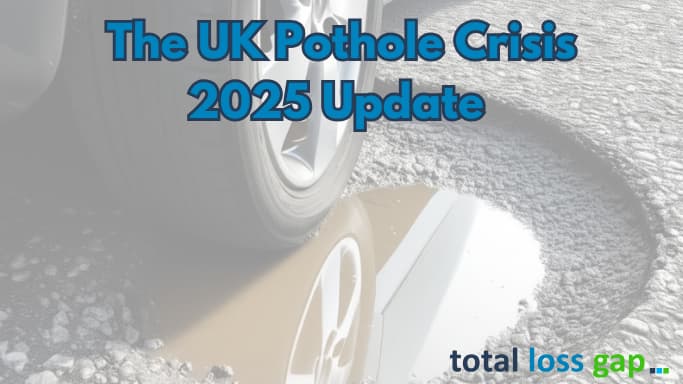Customer Service Lines Open Mon-Fri 9am-6pm



[ Contact Us ]
Need Help? Calling from a mobile please call 0151 647 7556
0800 195 4926Do you have a question? or need help?
Customer Service Lines Open Mon-Fri 9am-6pm, Closed Saturday & Sunday
We looked at the UK’s pothole problem in 2022 and asked if it had reached a crisis point. Road users have been suffering damage and swerving a never-ending number of holes in our local roads.
Fixing potholes has been a continuous task for local authorities and it seems like little progress is being made to our broken roads. 
Fast forward to 2025, and the question isn’t if there’s a crisis , it’s what, if anything, is being done about it.
Has the UK road pothole crisis in 2025 got worse?
The UK government recently announced £1.6 billion for local authorities for road repairs, specifically focusing on potholes. That’s £500 million more than the previous highway maintenance funding confirmed.
The aim?
To fill 7 million potholes over the next few years.
Councils will now have to publish annual reports on the number of potholes they’ve filled and how the money is being spent, a welcome move towards transparency.
But there’s a catch: if they don’t deliver, they could lose up to 25% of their funding. That’s a big stick, but will it be enough to fix the roads?
Despite the extra funding, the problem seems to be getting worse. According to the Asphalt Industry Alliance, the total cost of repairing England and Wales’ pothole-plagued roads is now £17 billion.
One in six local roads is structurally unsound with less than 5 years of life left.
In other words, more money is being spent, but the gap between repairs and deterioration is getting wider.
The UK motorist is getting more and more frustrated as potholes damage cars.
Perhaps the most telling sign is the rise of what some call “pothole vigilantes.” Across the country, frustrated residents are taking matters into their own hands , patching holes, planting flowers in craters or drawing attention to them on social media.
These are often tongue-in-cheek, but the message is clear: trust in the system to fix the problem is wearing thin.
The risks for drivers are real, from tyre and wheel damage to more serious suspension issues. With the average repair bill from a pothole strike running into hundreds of pounds, this remains a major concern for motorists, insurers, and aftermarket providers.
At Total Loss Gap, we support drivers with policies that offer peace of mind when unexpected repair bills strike , whether from potholes or other road hazards.
Our Tyre and Alloy Wheel Insurance is becoming an increasingly popular choice for drivers who worry about having to repair an alloy wheel or replace a tyre after a pothole incident.
The pothole conversation in the UK has changed. The problem is no longer hidden , it’s mainstream, it’s political and it’s under the microscope.
But will this latest funding be a turning point or just another headline? What’s clear is that transparency, accountability, and long-term planning will be key to making our roads safer and smoother for everyone.
The requirement for local authorities to publish annual progress reports may help with transparency but even a half a billion pound increase in local road maintenance funding is it enough or just a pothole sticking plaster?
Filling potholes must be a priority for local highway authorities if the country's roads are simply not to crumble. The stated aim of repairing seven million more potholes is ambitious, but is it enough?
If the process is reactively fixing potholes when thousands of new potholes are appearing on a daily basis, even £500 million extra to repair roads may not be enough.
One thing is for sure, the issue of tackling potholes is not going away. .png)